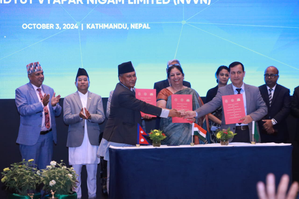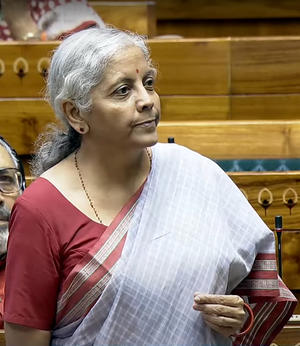FM Nirmala Sitharaman highlights success of IBC, lashes out at Congress for holding back reform

New Delhi, May 30 (IANS) Finance Minister Nirmala Sitharaman on Thursday said that the Insolvency and Bankruptcy Code (IBC) introduced by the Modi government in 2016 has brought a paradigm shift in the debtor-creditor relationship and provides a streamlined, one-stop solution for resolving insolvencies.
She cited a World Bank report of 2019 which noted that India’s 2016 insolvency regime reform increased creditor recovery rates from 26.5 to 71.6 cents on the dollar, making India ‘by far the best performer in South Asia’ and surpassing even the average recovery rate of OECD high-income economies.
In a detailed note on X, the Finance Minister took the erstwhile Congress-led government to task for dragging its feet over the reform despite the need for a modern corporate insolvency regime being highlighted by many expert groups over the years including the Raghuram Rajan-led Committee on Financial Sector Reforms (2008).
“…because of the delays (sometimes endless), the system prevents the reallocation of assets to their best use, and greatly wastes asset values of impaired debtors, to the detriment of the economy. Closing a business also takes a long time in India—on average 10 years in India compared to 1.7 years in China,” the committee had said.
“However, like with GST, the Congress-led government was not keen on expending political capital to build consensus and implement reforms,” FM Sitharaman remarked.
The Finance Minister said that the success of the IBC code can also be seen through numbers.
“The erstwhile Board of Industrial and Financial Reconstruction (BIFR) regime resolved less than 3,500 cases in the nearly 30 years since its inception in 1987. By contrast, from its inception in 2016 until March 2024, the IBC has rescued 3,171 distressed companies and assisted in the shutdown of unviable firms,” she added.
“Notably, 40 per cent of the resolved companies were previously inactive, showing its ability to revive stagnant businesses. Overall, an amount of Rs 3.36 lakh crore has been recovered by creditors, which is around 32 per cent of what was claimed and 162 per cent of the liquidation value.
“On average, resolution plans are yielding about 85 per cent of the fair value of the distressed companies. This recovery has helped creditors provide additional credit, thereby promoting economic development,” she added.
In fact, a recent sample study by IIM Ahmedabad on the effectiveness of the IBC resolution process observed that the companies witnessed significant improvements.
As can be seen from the study’s graphics, three years post-resolution, their average sales rose by 76 per cent; employee count recovered to nearly pre-bankruptcy levels; average total assets rose by 50 per cent, and Capex increased by 130 per cent (indicating a build-up of tangible assets).
Moreover, as recently mentioned by RBI Governor Shaktikanta Das, the IBC has fundamentally transformed the credit culture in India, nudging debtors to settle their dues even before the initiation of insolvency proceedings.
The shift towards more responsible credit behaviour is evidenced by the withdrawal of over 28,800 applications involving defaults exceeding Rs 10 lakh crore before their admission (March 2024).
The Finance Minister explained that the IBC’s prioritisation of resolution over liquidation helps preserve jobs, maintain the value of assets, and ensure that businesses can continue contributing to the economy. This is evidenced by the successively increasing number of resolution plans approved under the IBC.
Lashing out at the Congress, she said: “Despite the crying need for enacting insolvency laws, the UPA regime consciously sought to reward its cronies at the cost of the banks and operational creditors who had to run from pillar to post for recovering their dues.”
She added that the IBC has played a key role in helping banks recover from the NPA crisis created by Congress and its allies during the UPA year through ‘phone banking’ and indiscriminate lending.
The Finance Minister also cited an RBI report which states that the IBC continued as the key mechanism for banks to recover stressed assets – accounting for the greatest recovery, by far, among different channels in 2022-23 (43 per cent of the total amount recovered).
Post implementation of IBC, the gross non-performing assets (GNPA) ratio of Scheduled Commercial Banks dipped to a multi-year low of 3 per cent and the net non-performing assets (NNPA) ratio to 0.7 per cent (as of December 2023).
The Finance Minister said that the Supreme Court has delivered many landmark judgments settling contentious issues and affirmed the legislative spirit and intent of the IBC.
“Legislations like IBC are a testament to the far-reaching vision and foresight of the Modi-led government. Having been freed of the red tape of the UPA-era archaic legislation, the entire economy is reaping the benefits of this landmark legislation today,” Finance Minister Sitharaman added.
–IANS
sps/dan




